Published in Camera Magazine, nr 3 2002. The photos are the ones that are used in the article.
All photographs are also available large (about 850x850). Click on the image to enlarge.
© Wim van Velzen, May 2002
I'm sure I am not the only one who thought to make much better photographs with a medium format camera. I wasn't really discontented by the 35mm results, but well, with such a 'real' camera everything would of course be more beautiful.
The moment a TLR was for sale at a nearby photo shop (even I as a student could afford it), I went immediately inside and bought my fresh found love. This Yashica D and I stayed together for more than a year. I fell heavily in love with the large square screen and the possibility to enlarge without losing detail. I was so much in love, I'd rather haven't used 35mm anymore. One problem though: one lens was a bit too limiting.
So, the moment I saw a Bronica EC-TL for sale I traded in the D. Looking backwards I never should have done that. A TLR has much less weight. It can be taken everywhere, while a pack full of Bronica gear is bit heavy when shopping in York. Therefore I recently bought a Rolleicord. It works silently - an added plus for working insides churches and the like.
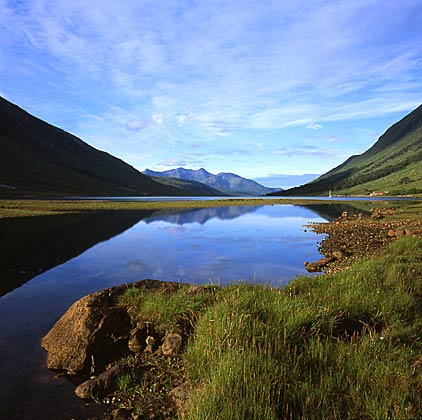
Very soon a wide angle, a telephoto and a set of extension tubes were added to the EC set. It took some time to find those, but that is the charm of the thing. 'May be a weird question, but do you happen to have somewhere some tubes for this camera?' I suppose it sounds familiar.
All these purchases could be defended at home as business expenses. At the time I already did some weddings for friends and family and well, a 27x27cm print is very impressive in the album.
And: my wife wants to see me happy. So my hard earned money was used to buy more stuff. I was more than happy to find a Nikkor 25cm 4.0 (vintage 1962) for Bronica. This lens does only fit the S outer-bayonet, not the EC's. So I took the S and a bellows for this camera as well.
Alas, the S had opposite ideas: she only wanted retirement. She jammed a few times and I made a cruel decision. Feenstra in Maassluis made an adaptor from the S outer-bayonet and an EC focussing unit. I could use the 25cm on both my EC-TLs now!
Later a 2x convertor were added as well as a prism finder. And two Rollei slide projectors, or had I already mentioned that?
A lot of stuff altogether -but a beautiful complete set for the same price as a second hand Swede with one single lens!
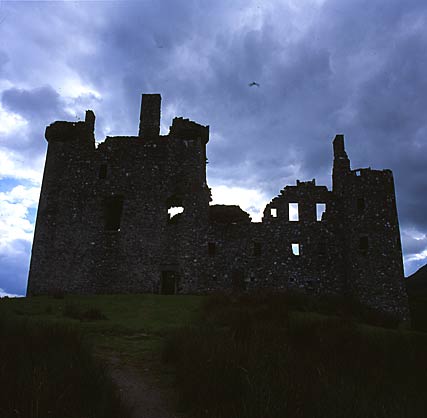
For her age (about 25 year now) there is remarkebly little to mention what the 6x6 cameras today do have and the EC lacks. Because of the focal plane shutter the flash possibilities with a sync time of 1/60 second are limited, but the mirror returns instantly after the exposure. Bothersome is the minimum distance of the 150mm: 2 meters. This is caused by the focussing unit for all lenses up to 200mm, having a maximuml extension of 14 mm. The 80mm and the 50mm for the same reason focus real close (64 and 32 cms respectively).
The camera is fool-proof: if the slide is in the camera the shutter cannot be fired. It isn't necessary to cock the shutter before changing lenses. Actually one cannot do a thing that is technically not allowed. In short: a fine workhorse one can work fast and reliable with. When purchasing a camera one should watch out that she isn't worn out by many years of hard professional use. And take her to the garage in time for servicing!
What I did miss was a bright screen, especially inside during weddings. Once in a while I missed the exact focus, especially with the 50mm. Hasselblad and Rollei nowadays have beautiful bright screens, but nothing seemed to exist for the EC. The well known Beattie don't have a so called Intenscreen for this camera.
Via the internet I contacted in the end the small American business Maxwell Precision Optics. I sent him an EC screen and after some time I got a beautiful screen: about 1 ½ stop brighter and with an excellent contrast. Though expensive (costum made out the of the USA isn't cheap: $ 300. Off the shelf they are better value) it is absolutely worth the money: focussing is quicker and more precise now.
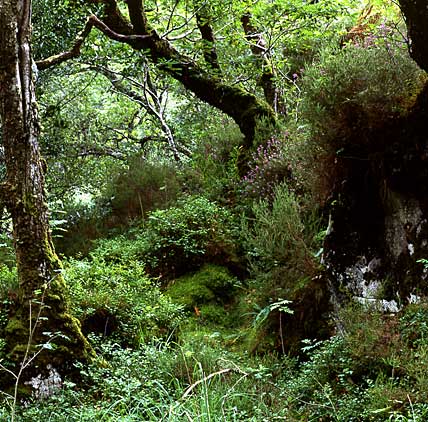
Were my pictures really that much better because of medium format? Certainly not all. Trying to capture my little son with the EC was most of time disappointing; 35mm has its use. And macro or super telephoto isn't that easy to do with medium format either. Therefore I tend to do enviromental portraits of plants and animals, with a lot of attention to what is around the subject... And that works out very well, exactly because of the stunning amount of visible details!
And those slides: they win from 35mm hands down. So many details, so crisp lights, so real. Larger is simply better and more beautiful here. While medium format can be a course when walking, it is a bless once at home!
Apart from the larger film size there is another important reason why medium format gives better results. Because of the weight of the camera (2.5 kg with 80mm and waist level finder!) a tripod is inevitable. Each photograph you want to make is a strain itself. Find a place to stand, push out the tripod and pose it. Put on the camera with the lens you want to use (no zoom lenses for this camera!), meter the light with a handheld meter or with a 35mm SLR. Lock up the mirror, wait for a lull, push the button. Maybe a stop over and under. Camera off tripod into the bag, push in the tripod, walking again.
Because you have to do all these things, it is nearly impossible to shoot at random: that is simply too tiring. The large camera forces you to choose more deliberately what and how you want to photograph. Of course one can do the same with a 35mm, but it is at least not my cup of tea.
The reverse of the medal is of course that spontanuous family snaps and holiday pics are a bit difficult. So the 35mm is in use as well!
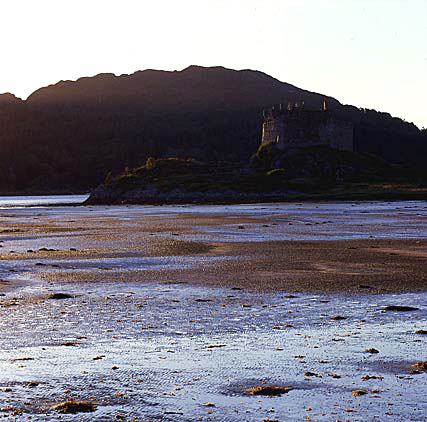
The work I do for my own is mainly landscape. Trying to catch in a picture how beautiful the world can be. How a great landscape is put together by little mosses and pieces of rock, water and air. How nature and culture are interwoven.
To record those things it is important to know about the subject. The more often I visit a certain place, the more eloquent the images. More and more one is able to put into the photograph what really caught the eye in the first place. Therefor I cannot imagine to take home good pictures after two weeks to Thailand or the like.
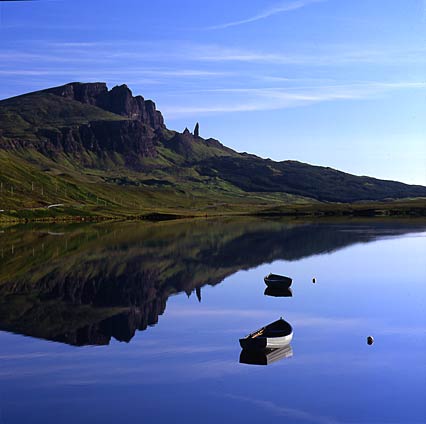
Photography is also a brilliant excuse to wake up at 6.00 ante meridiem during a vacation and leave the tent. The light is soft then and the day still silent. Just put the pack on the left shoulder, tripod in the right hand and walk!
Often one can read that it is impossible to make good landscapes on the middle of the day: the light is too harsh, the sun flattens the images so to say. And indeed, one should keep in mind that the light is less modelling. The photo is often less romantic. But on the other hand: may be such an image tells more about the scene. And sometimes bright colours can be captured better at noon.
The choice is up to the photographer: do you want to make a glamour portrait of the scenery, in the soft light of the late evening or do you want a more documentary portrait?
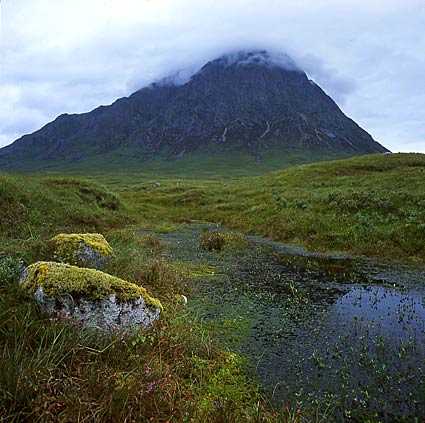
For landscape photography the square is not really obvious. Maybe that is why I like it so much. OK, sometimes I'd like to work with a 6x17. But generaly it is perfectly well possible to fill the square. It takes a bit more time, but that's the way to learn the most.
With respect to composition it can be a bit different from 35mm. For rectangular pictures the diagonal is very important. For square images one can work very well with symmetry or triangles. The best images are composed in a way that lets the eye stroll over the entire image.
Of course not all subjects are fit for a square composition. A lot of scenes have simply more width than height. For a projected slide it isn't always problem if some part of the image is less interesting. For prints cropping to rectangular is sometimes better.
The square has another great advantage to me: it perfectly fills the projection screen. The image seems endless, it has no ends. The viewer is put right into the image. Simply stunning!
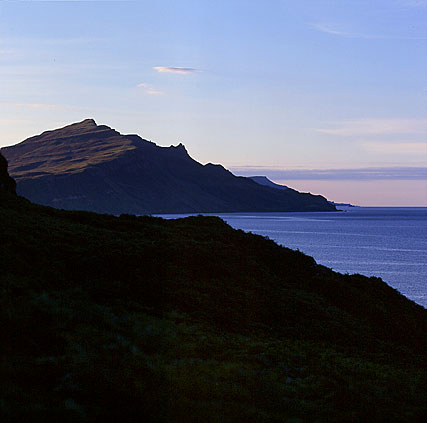
Every one has his own favourite places where he comes time and again. For me that's Scotland, land of rest and room. Deserted glens, wild rivers, endless number of isles and always changing light. Scattered on the coast lie the towns with lobster fishers and their softly plopping boats. Castle ruines or old chapels rest on small isles. The beach smells after kelp.
The weather is always beautiful, the light always different. Of course, if one wants nice weather during the holidays, one would better head for the south. But believe me, the weather in Scotland is always beautiful.
Medium format might not be fit for wildlife, but with the 25cm and 2x convertor I can capture the seals quite well. For bird watchers and their 600mm-s especially the cliffs are a must. On the bird islands one can even work with a wide angle!
The flowers are stunning as well. Sometimes people wonder what time of the year the heather are flowering in Scotland. The answer is: from june untill september. All kinds of heather florish together and always some are flowering. On the smallest pieces of rock the colour can be purple or pink. The most beautiful month is may be june. The broom colours the hills yellow and the rhodondendrons (the most beautiful pest they have over there) hide the cottages. But autumn is great as well. The brackens die and dye the mountains with brown; the deer return to the glens.
A land to lose your heart as a lover of photography, of nature and of active leisure!
You'll understand how we shocked the family this year. We won't go to Scotland!
This year the EC is taken to Ireland...

Bronica EC-TL
6x6 single lens reflex with focal plane shutter, produced from 1975-1980. Nikkor, Zenzanon and Komura lenses were made for these cameras. Up to 200mm inclusive all the lenses use the same focussing unit. Longer lenses and the bellows use the outer-bayonet.
I have got a Zenzanon 50 2.8 MC, a Zenzanon 80 2.4 MC, a Zenzanon 150 3.5 and a Nikkor 25cm 4.0 (preset diafragm).For more information: Robert Monaghan devotes a great deal of his Medium Format site to these cameras. This site is recommend anyway for information about everything you want to know about medium format!
where to find Maxwell
Maxwell Precision Optics, PO Box 33146, Decatur GA 30033-0146; telephone: 001 404 244 0095; e-mail: maxwellprecisionoptics@toast.net
Published in Camera Magazine, nr 3 2002.
All the photographs shown here and lots more are put in several portfolios!
It is also possible to order prints or to use them editorially or commercially.
Comments on the article and photographs are welcome!